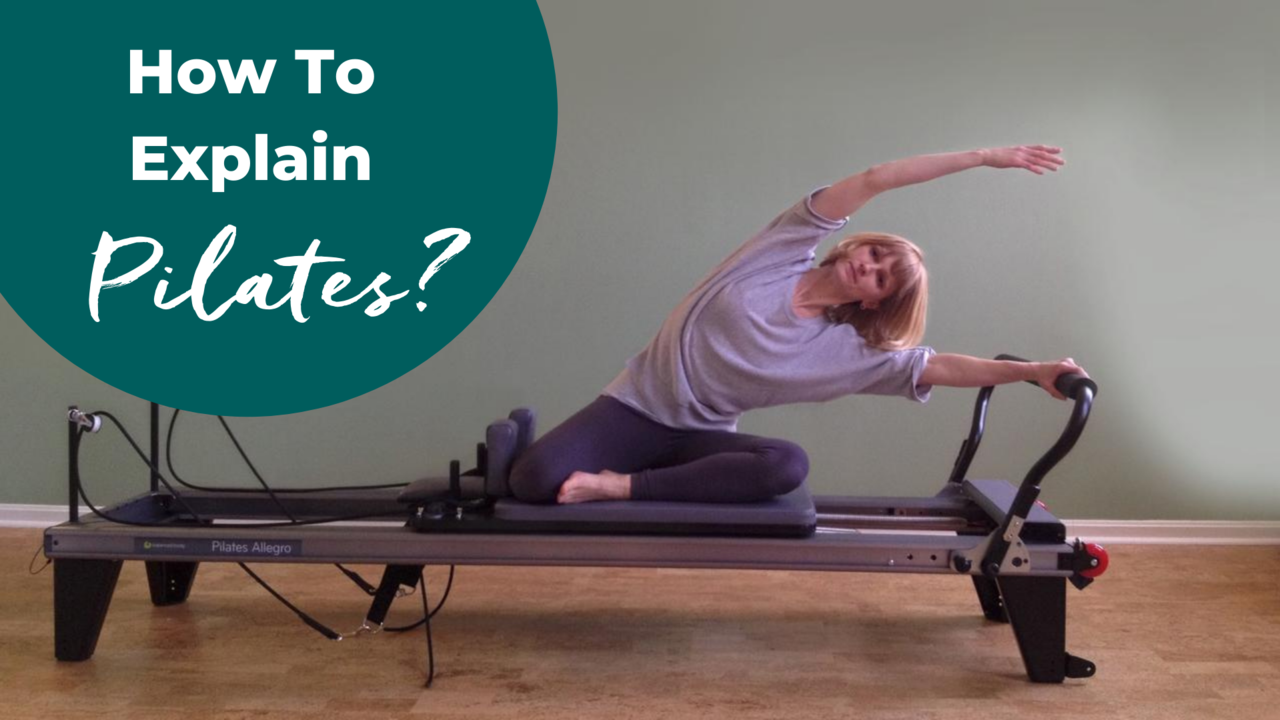How To Explain Pilates?
Oct 26, 2016
One of the most difficult things in the life of a Pilates teacher is to explain what Pilates is and what it does? Here is a question I recently received from a fellow teacher:
How do you explain what Pilates is? My first statement is “It's not yoga.” Then I say “Pilates teaches functional movement to help you get through your day. It strengthens your core and helps improve your posture.”
I like your answer. It's short and sweet and to the point.
If you are looking for a more precise or comprehensive answer - and I have a feeling you might be - let me tell you first that I can absolutely relate to that. I often feel that any explanation I give about the Pilates method does not give it justice. Yes, it’s a form of exercise, but it’s so … much … more.
How can you describe fully what the method can do for a person?
Quite honestly, at this point in my life and career, I would say you can’t. Everybody has to experience it first hand to understand and comprehend.
I don’t know about you, but I still - after 10 years of teaching - discover or remember ways in which Pilates improves my life and that of my students. It never ends. Which is amazing and terrible at the same time. Amazing, because Pilates will give you answers for the rest of your life. Answers to why you lower back is tight, or answers to why your knees hurt. It also shows you the way out of that. But it’s also terrible, because it will raise new questions in you. You will discover new aspects about your body. Areas that are not working the way they should. With every milestone you achieve, another weak link appears. It’s endless, really. (I can hear the frustrated student: “It never ends.”)
You can interpret this as a bad thing or a good thing, but it’s the truth, the ultimate realization that “It’s about the journey not the destination.”
The more complicated your answer gets, the less likely it is for a person who has never experienced Pilates to understand or relate. Most people zone out. They try to understand, but if you’re getting too technical, they can’t follow.
It might be helpful to say, Pilates includes small precise movements, no jumping, no stress on the joints and lots of breathing and concentration.
It might be helpful to use the terms or phrases that most everybody is familiar with, such as “mind over matter” or “less is more”.
Because the technical aspects are hard to grasp, I try to use metaphors as often as possible to explain Pilates. You might already be familiar with the symphony metaphor.
Here is another one:
Think about the method as your best friend. What did it take for you to develop a deep friendship with someone? You spent time together, lots of good times. You hung out together regularly and got to know each other, bit by bit, day by day, drink by drink. It didn’t happen overnight. Now that you have this strong bond, it feels amazing to know that you can rely on her to help you get through hard times when they come and vice versa.
When life throws you one of its curveballs you’ll have that friend’s support. Because she knows you so well, it’s going to be the right advice for you. You’ll happily take her advice. You feel supported and safe. It makes all the difference.
With Pilates, you have to invest time in the beginning. It’s going to require some time to get to know the exercises. This should be a joyful time. After all, if it’s about the journey, we better enjoy every minute of it. Wouldn’t you agree? Practicing Pilates should be nurturing, you should feel better after a class (exhilarated and light), not worse (drained and exhausted). Over time you’ll get to know each exercise better and should - one day - your body ache, the method will provide you with just the right exercises to help you get through it, to make your body feel better again.
Now I'd like to hear from you: How do you explain Pilates to your (potential) students?










